Having worked with Asian Studies over the past couple of years, I heard the argument that, when faced with a vast choice of European locations to visit, East Asian tourists take into account the UNESCO list of world heritage. So I was not surprised at all when I saw that many of our fellow passengers on the bus between Segovia′s distant train station and old town held guidebooks in Asian languages. The small town graces UNESCO world heritage list since 1985 because of its prominent Roman aqueduct and other remains of various eras.
Segovia is cute, and its winding streets easily absorb crowds of tourists so that walking there would not feel artificial and de-localized. The aqueduct, over 800 meters long and built, apparently, around 50 BC, is the most obvious tourist spot, where people make selfies, wait for buses or catch taxis to take them back to the train station. The station is notoriously far, buses run quite seldom and are poorly aligned with train schedules – this is probably an incentive to use taxis. Yet with more than two people on board, a taxi pays off. Solo travelers returning to their train could easily find company for taxi sharing by the aqueduct, since most people hanging out around the aqueduct will probably be tourists.
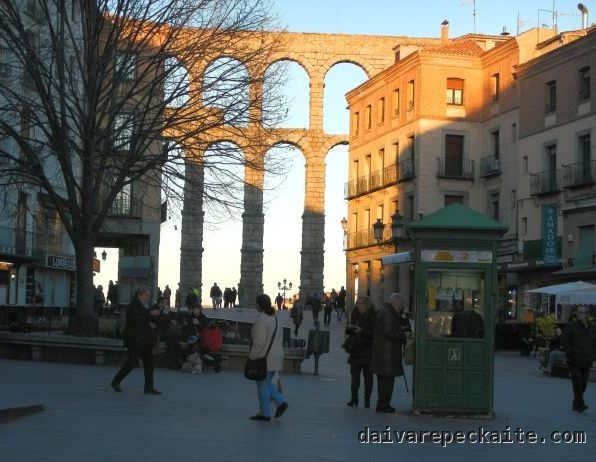
Segovia aqueduct
Having passed the aqueduct, the tourist path leads to the right, towards an observation spot, with street musicians nearby.
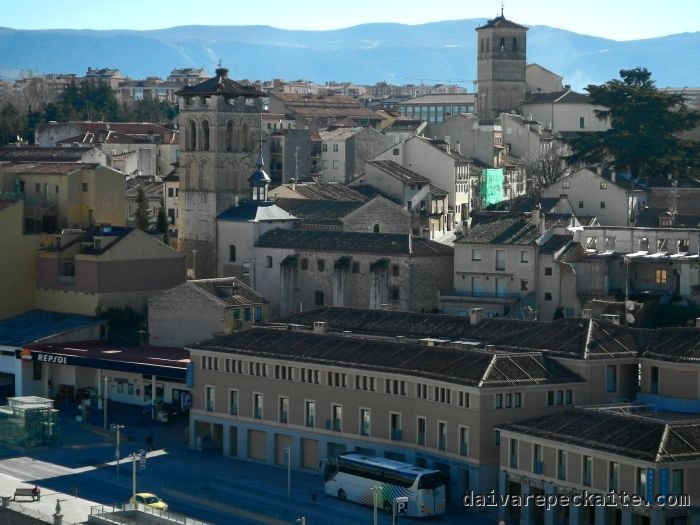
Segovia old town
At this point the tourist crowd dissolves. Some go to see the town’s churches, others check out its cafes, and yet others rush to the Alcazar – a medieval fortress, started in the 11th century and modified subsequently, until it became a mixture of architectural styles. Several layers of Spain′s past are presented side-by-side for tourists to see. The whereabouts of Segovia′s Jewish quarter from the 16th century, which is still recognizable to specialists from street layout and architecture, are marked with a sign ′Sfarad′ (Spain):
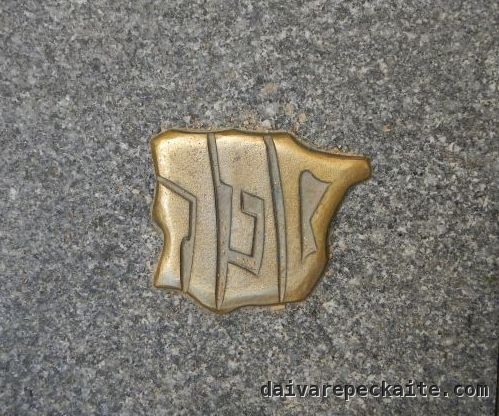
My friend pointed out that the letter dalet covers Portugal. What remains on the Spanish territory, then, is the Hebrew word for ′book′. Yet Segovia′s former Jewish quarter is not an easy book to read. Despite floor markings, it is now home to Pakistani restaurants and strange statues. I prefer it to be that way rather than the way the Jewish quarter is remembered in Krakow. Over there it is like a cheesy ethnic disneyland.
Segovia′s market was one of my favorite places in the town. People sell candy and various herbs – this is useful, as herbal infusion is not easy to find in Spain. There are many tourist cafes around the market, but we decided to have lunch in the former Jewish quarter instead. The lunch of the day cost nearly 12 eur and we were offered a choice of water or wine to go with the food. I overheard three Israelis at the next table discussing what kind of meat is in which dish.
Alcazar is the second tourist hotspot after the aqueduct. Lonely Planet claims that Walt Disney modeled Sleeping Beauty′s castle in California′s Disneyland on this fortress. To be honest, I enjoyed exploring a pedestrian path around the fortress, with plenty of amazing views, more than visiting the fortress itself.
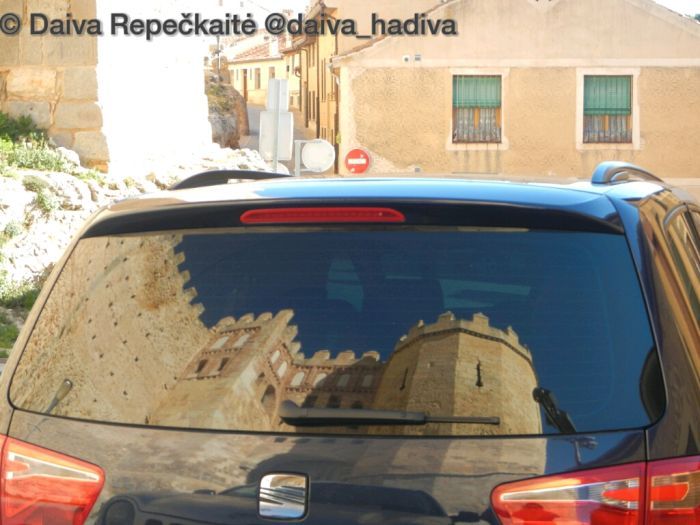
Entrance costs 5.5 eur, and some people try to earn additional money wearing armor and inviting tourists to take a photo with them at the entrance. There is plenty of armor inside the fortress. Some, complete with colorful skirts and placed in weird poses, look very metrosexual. Visitors who like reading a lot will enjoy an artillery museum inside the fortress, with prominent ancient studies in artillery, various samples and detailed descriptions – in Spanish only, though. The basement part is devoted to geology: geological maps, biographies of prominent scientists, tools and samples (including some impressive crystals), plus stories about the importance of geology for the country. I can′t say I was impressed with the museum, but I guess the alcazar is a must for a visitor, so at least I know I′ve done it.
Of course, every Spanish town seems to have several churches. The most interesting one is outside from the tourist center, but not far from the other end of the aqueduct. It has four stork nests at the corners of its tower, and it seems that the tower was designed to accommodate storks. The cathedral is Gothic, with various funny figures on the exterior. Entrance costs 3 eur, and we decided to give it a pass.
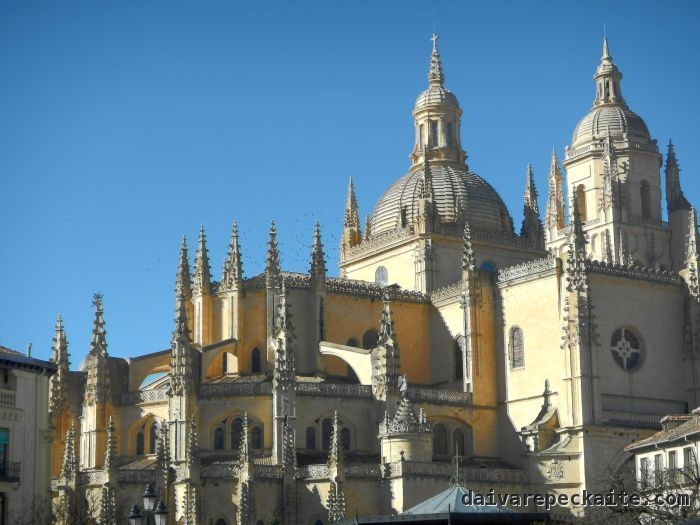
Segovia cathedral
All in all, I enjoyed tiny bursts of creativity more than the recognized tourist sites. There were some nice sculptures, such as a ‘split’ man close to the former Jewish quarter and a sculpture of 16th century doctor Andres de Laguna, a prominent educator. There were some nice views of Sierra de Guadarrama, and on the way back our taxi driver said that one of the hills was shaped like a woman figure. Earlier we had read that it′s called, for some reason, a dead woman. Finally, just before heading back, we came back to where we started and went to catch a glimpse of the street that runs on the left, the opposite direction from the tourist route. It was a busy street with shops and cafes, bustling with local life.
I felt that I haven′t seen everything, although I would say that a full day in Segovia is enough to explore it without rushing. And it′s a good feeling to leave with.

